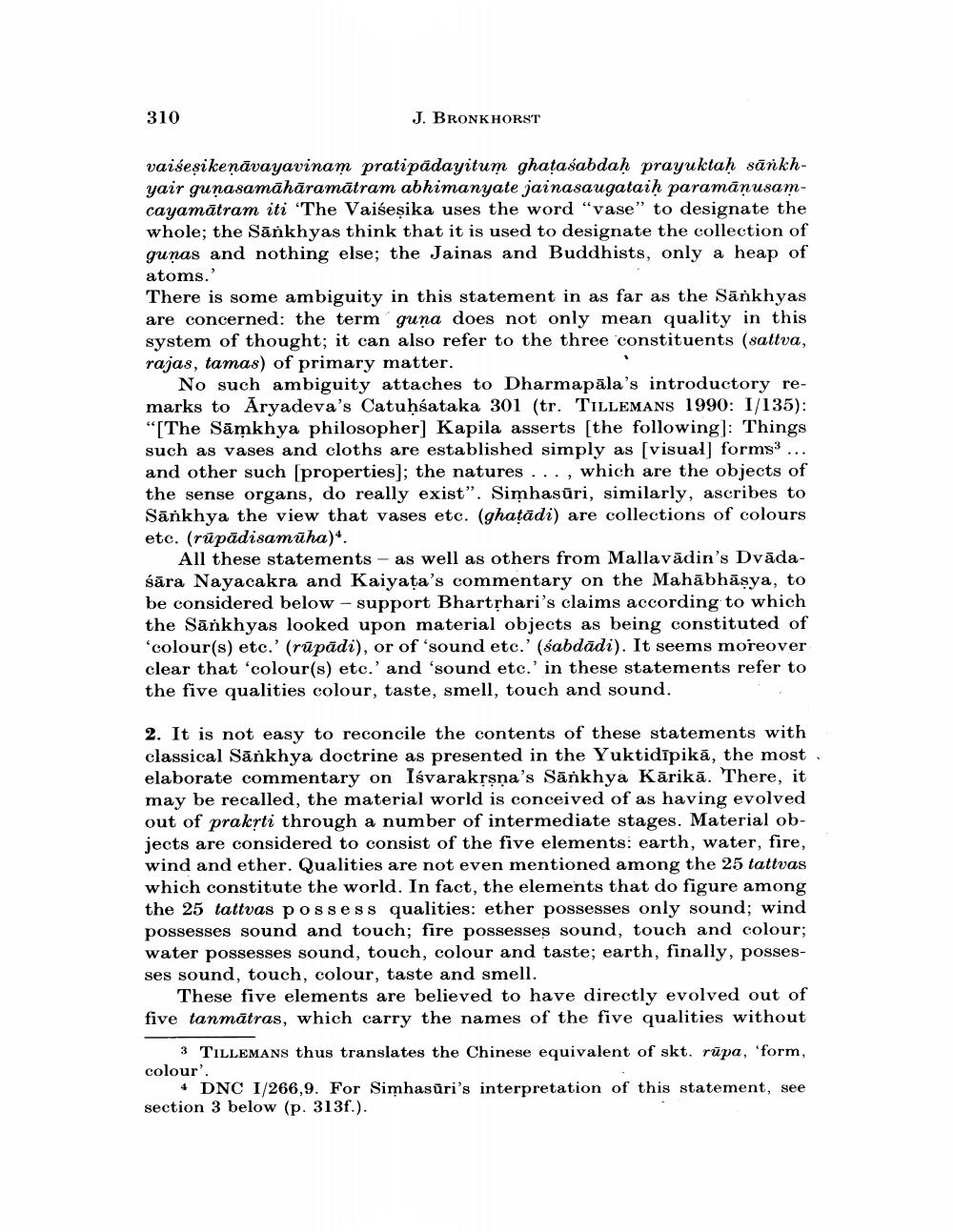Book Title: Qualities Of Sankhya Author(s): Johannes Bronkhorst Publisher: Johannes Bronkhorst View full book textPage 2
________________ 310 J. BRONKHORST vaiseșikenāvayavinam prati pădayitum ghatasabdah prayuktaḥ sānkhyair gunasamahāramātram abhimanyate jainasaugataih paramāņusamcayamatram iti "The Vaiseșika uses the word "vase" to designate the whole; the Sānkhyas think that it is used to designate the collection of gunas and nothing else; the Jainas and Buddhists, only a heap of atoms.' There is some ambiguity in this statement in as far as the Sānkhyas are concerned: the term guna does not only mean quality in this system of thought; it can also refer to the three constituents (sattva, rajas, tamas) of primary matter. No such ambiguity attaches to Dharmapāla's introductory remarks to Aryadeva's Catuḥsataka 301 (tr. TILLEMANS 1990: 1/135): "[The Sāmkhya philosopher] Kapila asserts [the following]: Things such as vases and cloths are established simply as [visual] forms3 ... and other such [properties]; the natures ... , which are the objects of the sense organs, do really exist". Simhasūri, similarly, ascribes to Sānkhya the view that vases etc. (ghatādi) are collections of colours etc. (rūpādisamūha) All these statements - as well as others from Malla vädin's Dvādaśāra Nayacakra and Kaiyata's commentary on the Mahābhāsya, to be considered below - support Bhartrhari's claims according to which the Sankhyas looked upon material objects as being constituted of 'colour(s) etc.' (rūpādi), or of 'sound etc.' (sabdādi). It seems moreover clear that 'colour(s) etc.' and 'sound etc.' in these statements refer to the five qualities colour, taste, smell, touch and sound. 2. It is not easy to reconcile the contents of these statements with classical Sānkhya doctrine as presented in the Yuktidīpikā, the most elaborate commentary on Isvarakrsna's Sānkhya Kārikā. There, it may be recalled, the material world is conceived of as having evolved out of prakrti through a number of intermediate stages. Material objects are considered to consist of the five elements: earth, water, fire, wind and ether. Qualities are not even mentioned among the 25 tattvas which constitute the world. In fact, the elements that do figure among the 25 tattvas possess qualities: ether possesses only sound; wind possesses sound and touch; fire possesses sound, touch and colour; water possesses sound, touch, colour and taste; earth, finally, possesses sound, touch, colour, taste and smell. These five elements are believed to have directly evolved out of five tanmātras, which carry the names of the five qualities without 3 TILLEMANS thus translates the Chinese equivalent of skt. rūpa, 'form, colour'. 4 DNC 1/266,9. For Simhasūri's interpretation of this statement, see section 3 below (p. 313f.).Page Navigation
1 2 3 4 5 6 7 8 9 10 11 12 13 14
